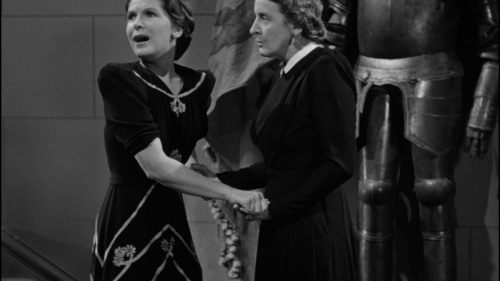Richard Kiel And Cinema’s Fragile Giants
When I heard that Richard Kiel had passed away on September 10th, of course my initial thoughts were about his role as “Jaws” in The Spy Who Loved Me. Whatever your thoughts about the Roger Moore era of the franchise, Kiel’s Jaws in that film was a true pop culture icon. Menace incarnate, with a freakshow look ported over from Ian Fleming’s novel, Jaws resonated with an audience seemingly itching to find Bond fun again. He was such a hit that he returned in Moonraker, a statistically rare occurrence for a Bond baddie. Jaws was endlessly copied, homaged and parodied, and to this day some Bond fans pine for a larger-than-life henchman who could come close to filling Kiel’s massive shoes. v The Bond films might have given him a legacy, but a look at Kiel’s filmography - nearly 80 credits including Eegah, The Longest Yard, The Twilight Zone, Pale Rider, Happy Gilmore, Skidoo (!) - shows a solid 50-year career, thanks in no small part to a pretty unusual look. Kiel’s appearance was due to acromegaly, a disorder of the pituitary gland which causes abnormal growth after puberty. It often leads to unusual height and exaggerated features, and it sadly has a list of complications which tends to ensure those afflicted don’t make it to old age. Kiel’s death at 74, following a hospitalization for a broken leg, sounds like it might be the result of one of those complications. But both his lifespan and his career seem to have beaten the odds: for nearly a hundred years, men suffering from acromegaly have carved out careers in Hollywood, but none of them enjoyed a career - or a life - as long and varied as Kiel’s.
John (Johan) Aasen’s affliction landed him a career in the Ringling Brothers Circus as “The World’s Tallest Man”, until Hal Roach came calling in 1922. Roach was in production on the Harold Lloyd film Why Worry? and was faced with the death of supporting player George “The Cardiff Giant” Auger. Desperate for a replacement giant, Roach tracked down Aasen through his shoemaker and signed him to a $300/week contract. Aasen, who measured 7 foot 2 inches, would go on to perform in over a dozen films. He died in 1938 at the age of 48. His skeleton hung in the living room of his doctor for decades.
Rondo Hatton was perhaps the most infamous acromegaly sufferer-turned-actor. A journalist whose affliction didn’t kick in until well into his adulthood, Hatton’s face got him noticed by a studio director who gave him a bit part. Hatton soon went full-time into acting, and over a decade his condition worsened, causing his features to become more and more exaggerated. In 1946 the 51 year-old appeared in a pair of films for Universal: House of Horrors and The Brute Man. The studio attempted to sell Hatton as their newest Universal Monster, falsely claiming in press materials that his unusual appearance was the result of a mustard gas attack during World War I. But their publicity campaign didn't pan out; Hatton’s condition killed him that same year, and in an attempt to distance themselves from the exploitation of the actor’s malady, Universal dumped The Brute Man into the lap of B-movie distributor Republic Pictures. Nevertheless, Hatton’s character “The Creeper” would echo throughout pop culture for decades, his unique visage turning up in everything from Judge Dredd comics and Disney’s The Rocketeer, to The Dark Tower and Doctor Who.
Ted Cassidy’s glandular problems gave him a booming voice to go with his looming stature, so his acting work wasn’t always relegated to standing around looking menacing. After working as a radio reporter (you can hear him here reporting on the day of JFK’s assassination), Cassidy became a staple of 1960s and 1970s television. Most familiar as Lurch on The Addams Family, he also logged memorable guest appearances on Star Trek, Lost In Space and The Six Million Dollar Man (where he took over the Bigfoot role from fellow acromegaly sufferer Andre the Giant). His deep voice turned up on Star Trek more often than his face did, and he was a regular in the Hanna-Barbera stable of performers. Cassidy died at age 46 after open-heart surgery. Today his voice is probably most familiar from the opening credits of TV’s The Incredible Hulk - not only as the narrator, but also providing the title character’s angry growls.*
Richard Kiel didn’t have Cassidy’s vocal talents, but he was no oafish stuntman, either. His career took him from westerns to science fiction to comedy, and he was almost always playing a character with personality, never a mere thug or a monster in a suit. The flourishes of humor he brought to Jaws are credited not only with the character’s lasting popularity, but his return in Moonraker. In between acting gigs Kiel penned an autobiography, co-wrote a book on 19th century abolitionist Cassius Marcellus Clay, and became a born again Christian. Tomorrow would have been his 75th birthday.
*Coincidentally, Kiel was initially cast as the green-skinned goliath in The Incredible Hulk. He filmed a few scenes before it was decided he wasn’t muscular enough. Though he was replaced by Lou Ferrigno, Kiel can still be briefly seen as the Hulk in one scene of the pilot.

